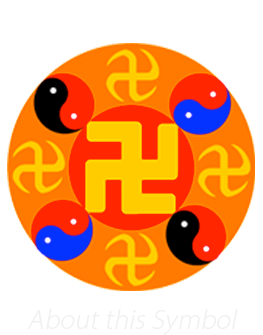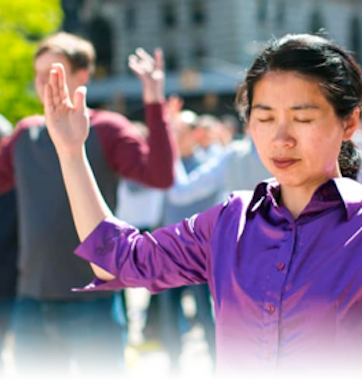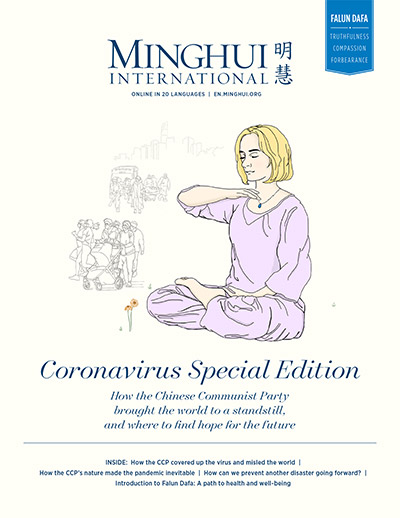(Minghui.org) The Chinese Communist Party (CCP) insists that it has not covered up any information about the coronavirus outbreak. However, more substantial evidence has surfaced to invalidate the CCP's claim. The following are some of such evidence.
Document Issued by the National Health Commission on January 3
On January 3, 2020, China's National Health Commission issued a confidential document:
(1) All regional governments and health commissions are to manage samples of coronavirus that caused Wuhan pneumonia according to regulations on “Highly Pathogenic Microorganisms (Type 2)”;(2) All related organizations must not provide or release test results to any other organizations or individuals without permission;(3) all medical facilities must immediately stop any ongoing viral testing;(4) all medical facilities must destroy all samples from patients;(5) frontline doctors in Wuhan must not disclose any information about Wuhan pneumonia.
Around the same time, eight doctors, including Dr. Li Wenliang (who would later die of coronavirus) were reprimanded by police for sharing their concerns with their colleagues on social media about the virus infection symptoms.
Clearly, the CCP authorities had been informed of the danger of the highly contagious coronavirus by January 3, but instead of warning people in China and around the world, they concealed vital information and tried to cover up the outbreak.
Human-to-Human Transmission Known by the End of 2019
Nature-Microbiology, an online journal, published a paper by Liu Manqing, deputy director of the Pathogen Biology Lab of the Wuhan Center for Disease Control. Liu stated in the paper that he and his team re-analyzed 640 throat swabs collected from patients in Wuhan with influenza-like-illness from October 6, 2019 to January 21, 2020, and found that 9 were positive for SARS-CoV-2 RNA, suggesting community transmission of SARS-CoV-2 in Wuhan in late 2019 or early 2020.
New News in Taiwan obtained two internal documents for senior CCP government officials, which revealed that several gene companies had discovered “SARS-like coronaviruses” in late December 2019 and reported them to relevant departments in Wuhan, Hubei Province, and the National Health Commission.
However, on January 1, the Health Commission of Hubei Province notified those gene companies by phone to stop further testing, destroy all virus samples, and ban the publication of relevant papers and data.
Two days later, on January 3, China's National Health Commission issued the same instruction as detailed at the beginning of this article.
Hong Kong's South China Morning Post reported on February 28, 2020, that a team led by the Shanghai Public Health Center and the School of Public Health of Fudan University, headed by Zhang Yongzhen, isolated and completed the genome sequence of the new coronavirus on January 5 and published the results of their investigation on January 11.
However, on January 12, the Shanghai Public Health Center was ordered to shut down by the Shanghai Municipal Health Commission without explanation.
It was revealed in notes by Xiao Hui, an investigative journalist with Caixin, that South Central Hospital in Wuhan had repeatedly reported suspected cases to the Wuhan Public Health Commission before Wuhan was locked down, but instead of having their reports taken seriously, the hospital was criticized for “not being politically conscious” and required to “pay attention to political impact and the way they speak” when WHO experts visited the hospital.
CCP authorities didn't publicly acknowledge human-to-human transmission until January 20.
Intentional Cover-Ups
The Associated Press reported on April 15 that, based on internal documents from the Chinese communist regime, Ma Xiaowei, director of China's National Health Commission, held a secret video conference with provincial health officials on January 14.
A memo revealed that “clusters of infection cases” were brought up at the conference, saying “the current situation of the contagious disease is complex and severe, posing the biggest challenge since the SARS epidemic in 2003.”
In the memo, Ma Xiaowei specially asked local health officials to “prioritize” political and social stability, particularly in view of the upcoming “Two Sessions” (annual meetings of the Chinese People's Political Consultative Conference and the National People's Congress, China's rubber-stamp legislature).
According to a number of classified CCP documents obtained by The Epoch Times on April 19, China's National Health Commission held a nationwide video training session on how to respond to and control the epidemic on January 15, which was relayed through branch venues at provincial and county levels to officials in the health sector.
For example, the Inner Mongolian Health Commission issued an “Urgent Notice” to its subordinate regional health departments to pass down the instructions from above. The document was marked “Express” and “for internal use, and should not be transmitted on the internet.” At least seven follow-up notices about the epidemic were issued on January 19 and 20, and all of them were marked “Not to Disclose.”
The CCP secretary of the Inner Mongolian Health Commission delivered a work report of more than 10,000 words on January 18, in which nothing was mentioned about the Wuhan coronavirus; instead, it glorified the CCP and the “achievements” of the health commission.
During the six days between January 14 and January 19 that were considered critical in controlling the virus, CCP leader remained completely silent, and it was not until January 20 when he made a public comment about the virus infection. By then, a large number of people had already been infected, mostly in Wuhan.
It was not until January 25 that China's National Health Commission issued a notice to “strengthen community prevention and control.” By then, nearly two months had passed since infection became known at the beginning of December.
Delayed Response in Wuhan
The Wuhan coronavirus infection was known as of December 1 or even earlier, and cases of human-to-human transmission became more prominent by mid-December. A total of 47 such cases were reported by January 1, including infections of 7 medical professionals. By January 22, the number of patients increased to 425, and 8 more medical professionals were infected, indicating it was already a very serious health hazard.
However, the Wuhan Health Commission still stated in its bulletin on January 11 that it had “not seen any infection of health workers, and there is no clear evidence of human-to-human transmission.”
According to the CCP's bureaucratic regulations, health commissions at municipal and county levels must not release information about a disease outbreak to media outlets without permission from the provincial health commission, which may also need to seek approval from higher authorities.
Therefore, Hubei Province did not take corresponding measures in response to the devastating outbreak until January 24, a day after the lockdown of Wuhan, and after CCP leader publicly addressed the issue. There was a full month delay in their response, and by then the virus had spread to other places in China and across the world.
Similar delays in response were also seen in Beijing, Shanghai, Shenzhen, Guangdong, Zhejiang, and other regions.
WHO Complicit in the CCP’s Cover-Up
For the past decade, the CCP has pushed aggressively to have pro-CCP figures elected to the top positions of specialized UN agencies so they would act in favor of the CCP on international issues.
“It already controls five of the 15, by using proxies, colonial-like proxies, like Tedros [Adhanom Ghebreyesus] at the WHO,” said the White House trade adviser Peter Navarro in an interview with Fox News.
“The damage done by the CCP’s control of the key health organization has been ‘absolutely enormous,’” Navarro said in the interview. “They suppressed the human to human transmission [data], they refused to call it a pandemic. They basically discouraged travel bans.”
Below is a brief recap of how the WHO, headed by Tedros Adhanom Ghebreyesus. responded to the coronavirus outbreak.
December 31 – Taiwan alerted the WHO that atypical pneumonia occurred in Wuhan, China, suggesting the possibility of human-to-human transmission. The WHO did not respond.
January 21 – When infections went out of control in China, the WHO downplayed the severity of the outbreak in Wuhan, saying there was “no clear evidence” to indicate “continued human-to-human transmission” and that it was unnecessary to put travel restrictions on China.
January 26 – The mayor of Wuhan revealed that more than 5 million people left Wuhan before the lockdown of the city on January 23. Among those who fled the city, more than 20,000 flew to Bangkok, 7,078 flew to Hong Kong, and 6,145 to Macau.
January 28 – WHO Director-General Tedros Adhanom Ghebreyesus flew to Beijing to meet with the CCP leader, saying “China's speed and massive scale of China's moves are rarely seen in the world,” that “it shows China's efficiency and the advantages of China's system” and that “the experience of China is worth learning for other countries.”
January 30 – The coronavirus had spread to 18 countries outside of China, with a total of around 98 confirmed cases. The WHO declared the outbreak a “public health emergency of international concern” but still refused to recommend any travel or trade restrictions, mostly out of concern for China's economic interests.
Tedros said, “Let me be clear: This declaration is not a vote of no confidence in China. On the contrary, WHO continues to have confidence in China's capacity to control the outbreak.”
February 26 – When infection cases exploded in South Korea, Iran and Italy, Tedros still said “there is no evidence of community transmission of the virus.”
March 2 – when the coronavirus had spread to at least 65 countries, Tedros still claimed that it was not yet a “pandemic.”
It was not until March 11 that Tedros declared the outbreak a “global pandemic” in the face of undeniable evidence.
The delayed statement from him resulted in some member states losing precious and critical opportunities for prevention and suffering disastrous losses.
Repression of “Rumors” about the Infection
After the lockdown in Wuhan was lifted on April 8, it appeared that the pandemic had ended in China.
But only days later, clusters of coronavirus cases broke out in Harbin City, Heilongjiang Province, according to a “Warning Notice” issued by Heilongjiang Provincial Coronavirus Work Force on April 13.
Local residents also revealed that thousands of people were lined up outside hospital emergency departments. Some hospitals had to shut down because many doctors and nurses were infected as well. Harbin is now locked down for the second time.
Just like the Wuhan authorities who underreported their local cases, the authorities in Harbin did the same thing. According to an internal document obtained by The Epoch Times, the CDC of Daowai District in Harbin reported 34 positive cases on April 10, but only two confirmed cases appeared on the official tally.
The Heilongjiang Provincial Committee of Discipline Inspection issued an internal notice on April 20, requiring public servants to “keep work secrets” and not to discuss the local epidemic situation on the Internet or social media. Those who violate the rule would be dealt with as “spreading rumors.”
Meanwhile, the same cover-up policy still continues in Wuhan. In recent weeks, Dr. Yu Xiangdong, a frontline doctor in Hubei, was punished and demoted from his position as deputy director of Wuhan Central Hospital for voicing his personal views about wearing face masks, household management, the lockdown of the city, admission screening, CT detection and the use of unproven Chinese herbal medicine. He was accused of “defaming national epidemic prevention policies.”
Copyright © 2024 Minghui.org. All rights reserved.
Category: News Commentary









